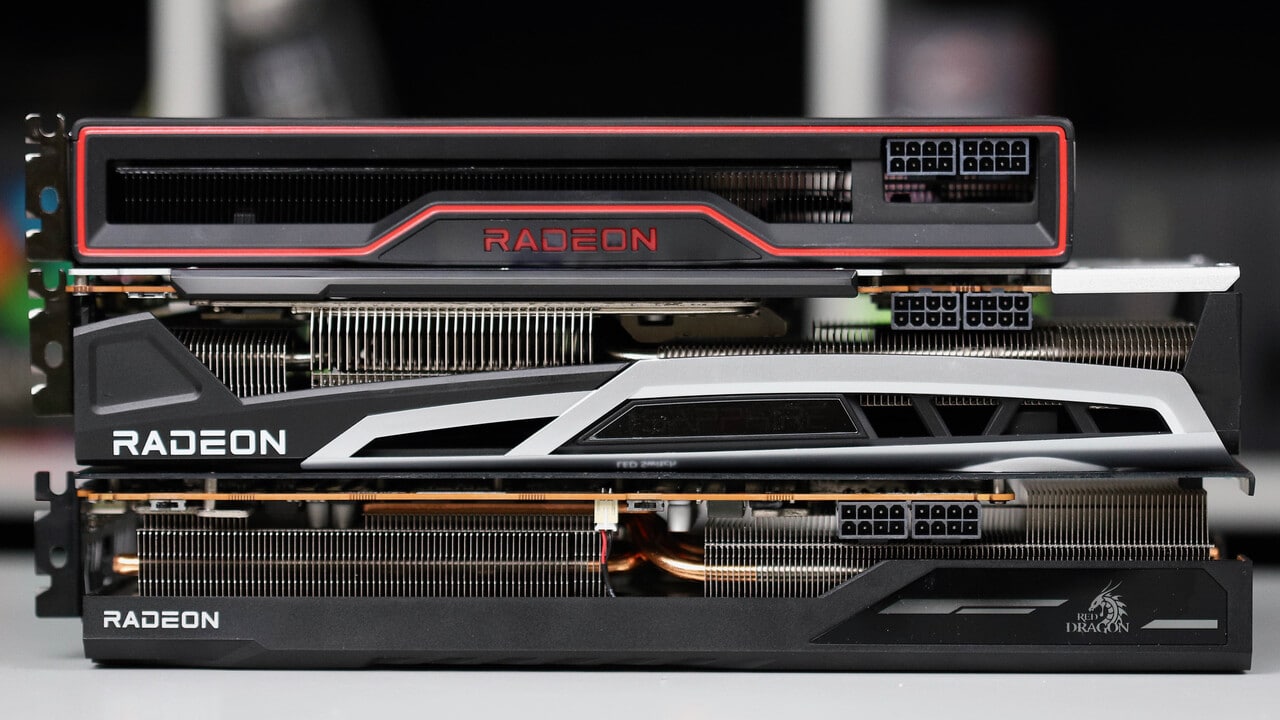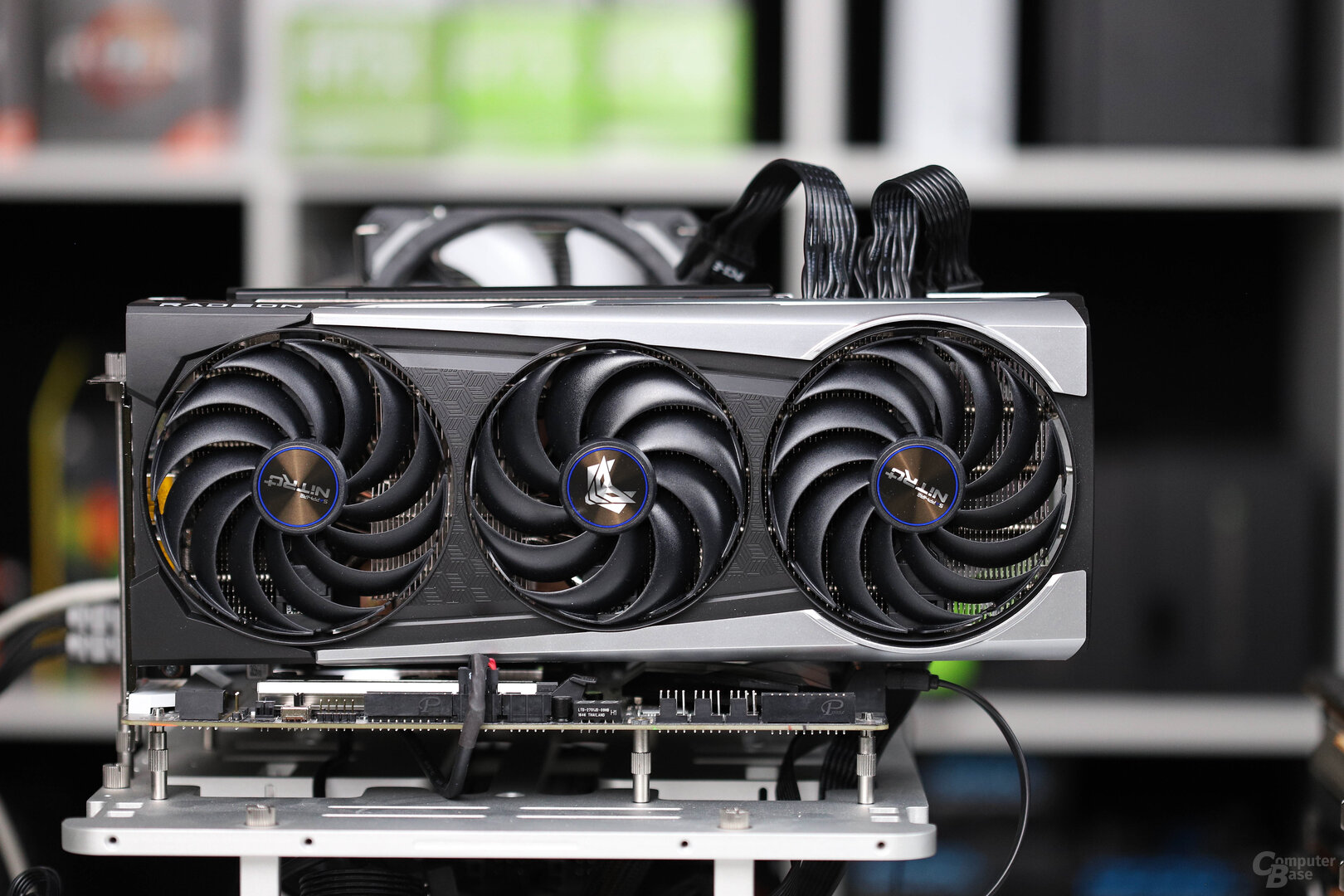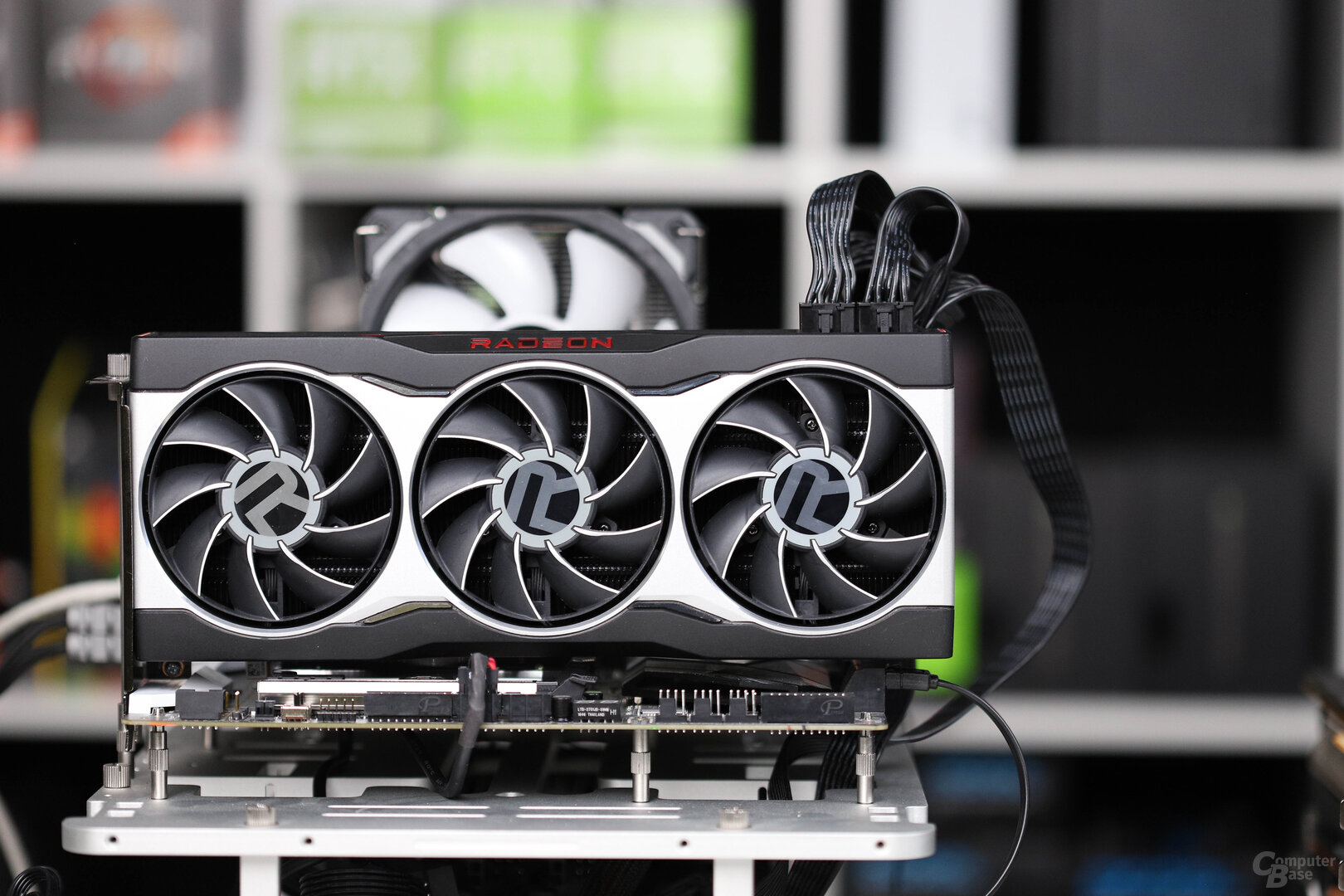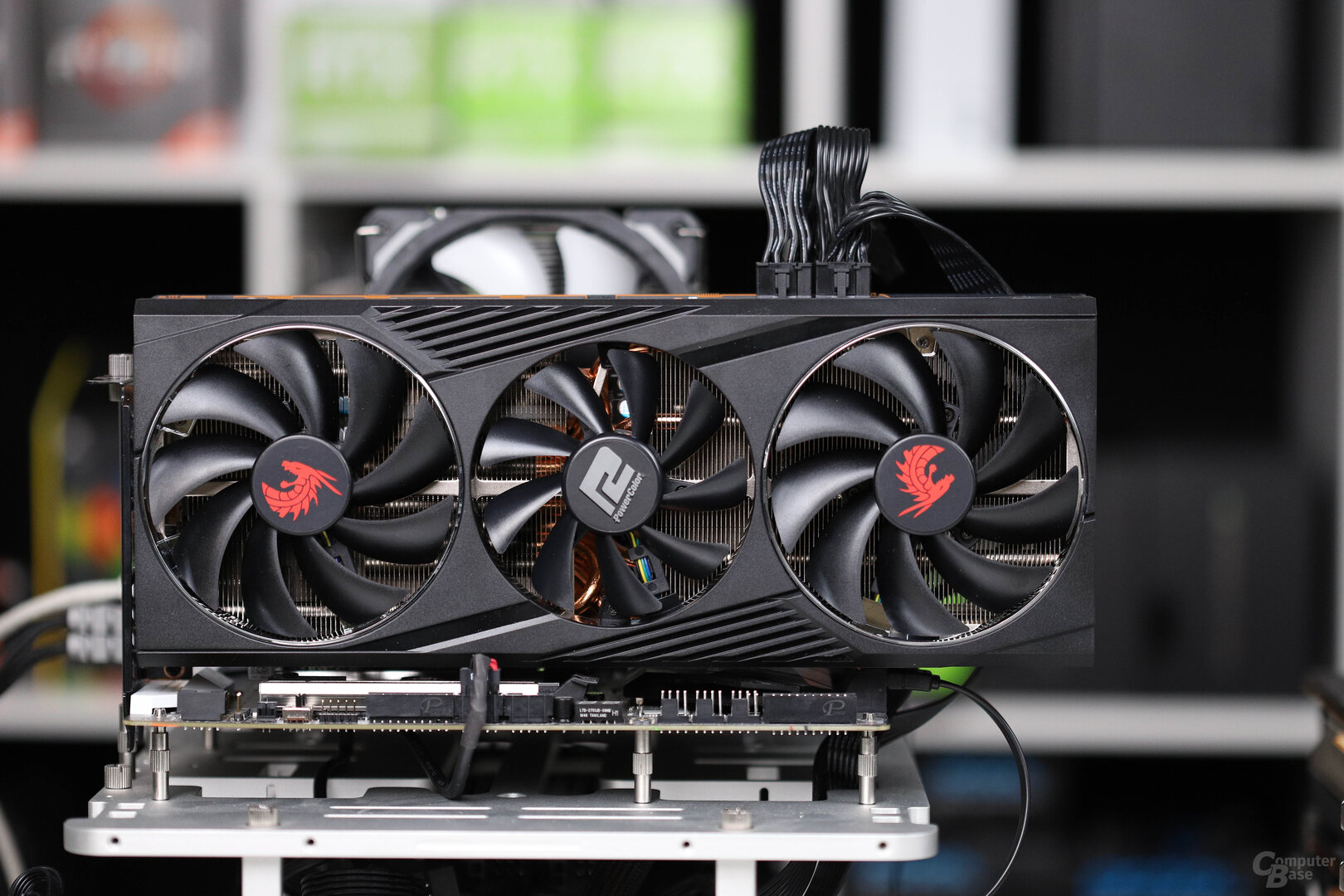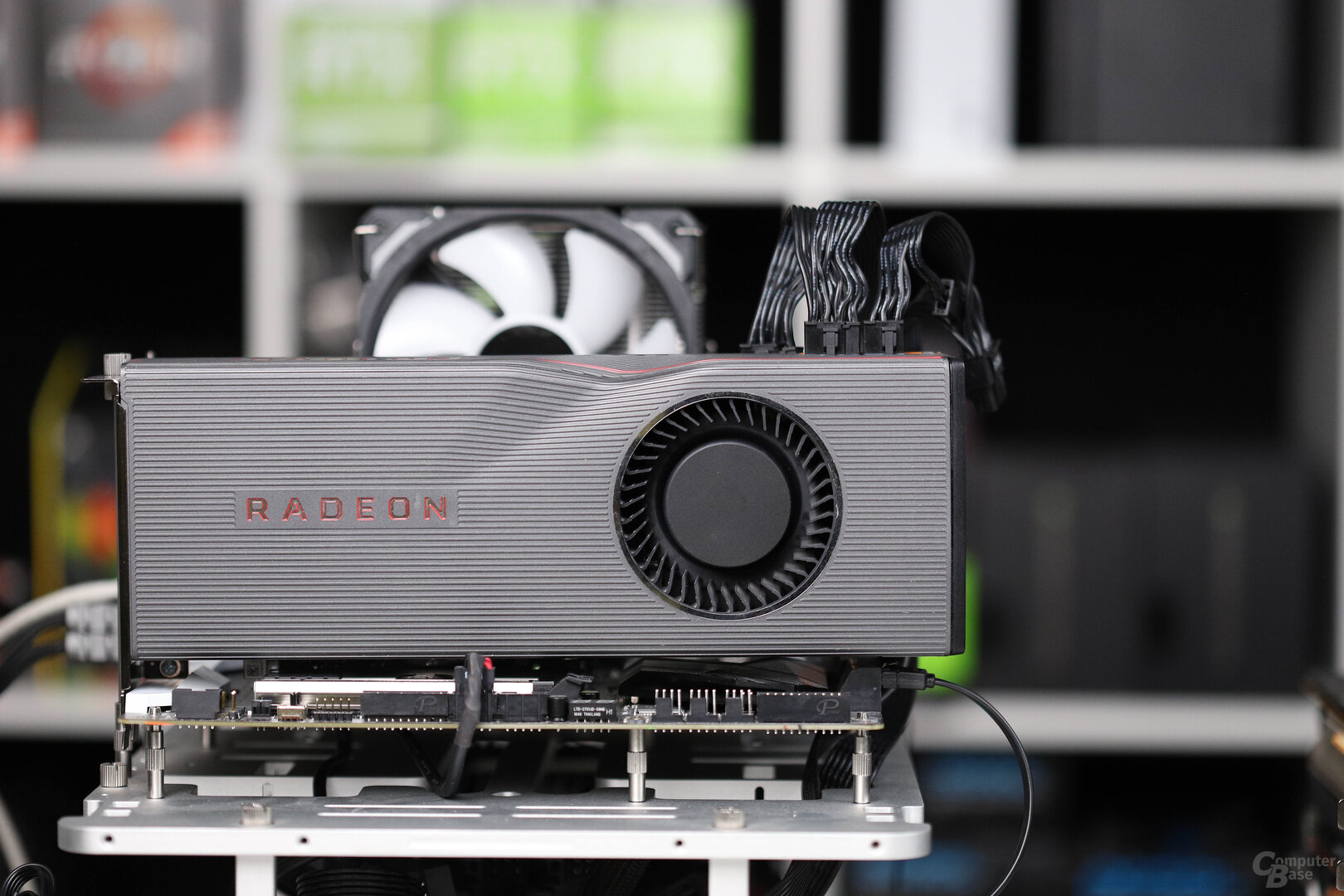Radeon RX 6800 (XL) Custom-Designs “titleonly”
: Test |CUP | Specs |Config
tl;dr: With PowerColor Red Dragon and Sapphire Nitro +, the editorial team is comparing the first custom designs with the Radeon RX 6800 “XL” in the test. After the red devil at the XT, the cheaper version of PowerColor is also making its debut, while the preliminary top model has to prove itself again at Sapphire.
PowerColor Red Dragon und Sapphire Nitro+ “titleonly”
You can’t buy them shortly before Christmas, just like the reference designs, but samples have already made it to the editorial office, some of them shrink-wrapped in a box straight from the factory: Custom designs with AMD’s Navi 21 aka “Big Navi”.
The editors use the “quiet days” between the Radeon RX 6800 (XT), 6900 XT, GeForce RTX 3080, 3090, 3070, 3060 Ti and what seems to be on the horizon for January, and are putting other custom designs to the test .
After Sapphire Radeon RX 6800 XT Nitro + and PowerColor Radeon RX 6800 XT Red Devil (test), it is now two smaller Radeon RX 6800s with the Navi-21-XL variant from Big Navi: PowerColor Red Dragon and Sapphire Nitro +. However, smaller does not refer to the dimensions of the graphics card, but to the expansion stage of the GPU and the prices in the official price list.
At first glance, both opponents are very close: Both graphics cards are the same length, the same width and with 2.5 and 2.7 slots respectively, almost the same thickness and offer three fans, two of which are 95 mm in diameter and one is 85 mm in diameter . But there are also numerous differences.
Radeon RX 6800 (“XL”) Customs in the test: PowerColor Red Dragon and Sapphire Nitro + against the reference
image 1 from 2

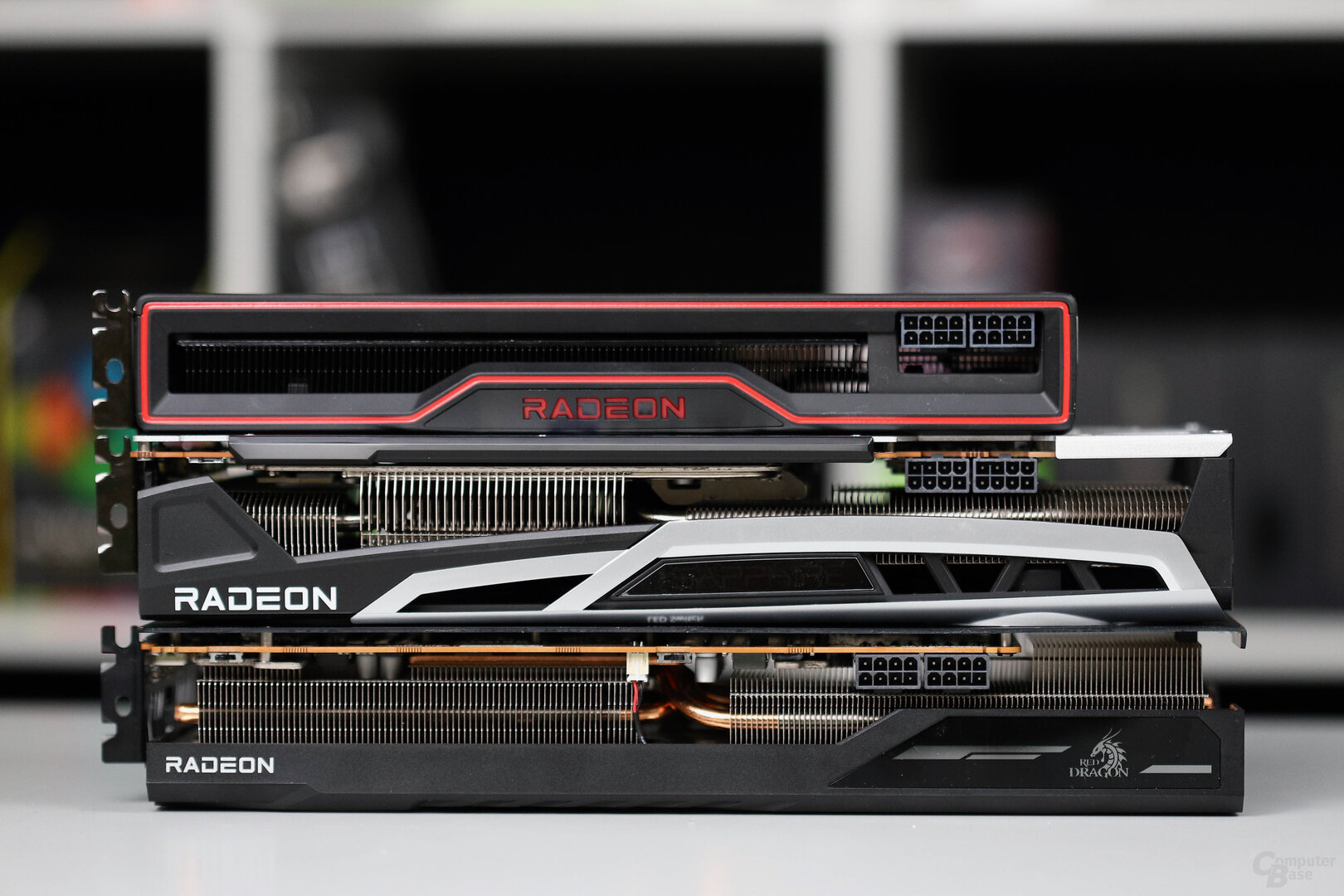
Sapphire Radeon RX 6800 Nitro+ im Detail
The Sapphire Radeon RX 6800 Nitro + is quickly outlined, because apart from the GPU trimmed by 12 CUs, the “XL” – the “XT” version of the Nitro + corresponds. In the test, it was particularly impressive in terms of volume, although it is significantly lighter than the reference design or the Red Devil from PowerColor.
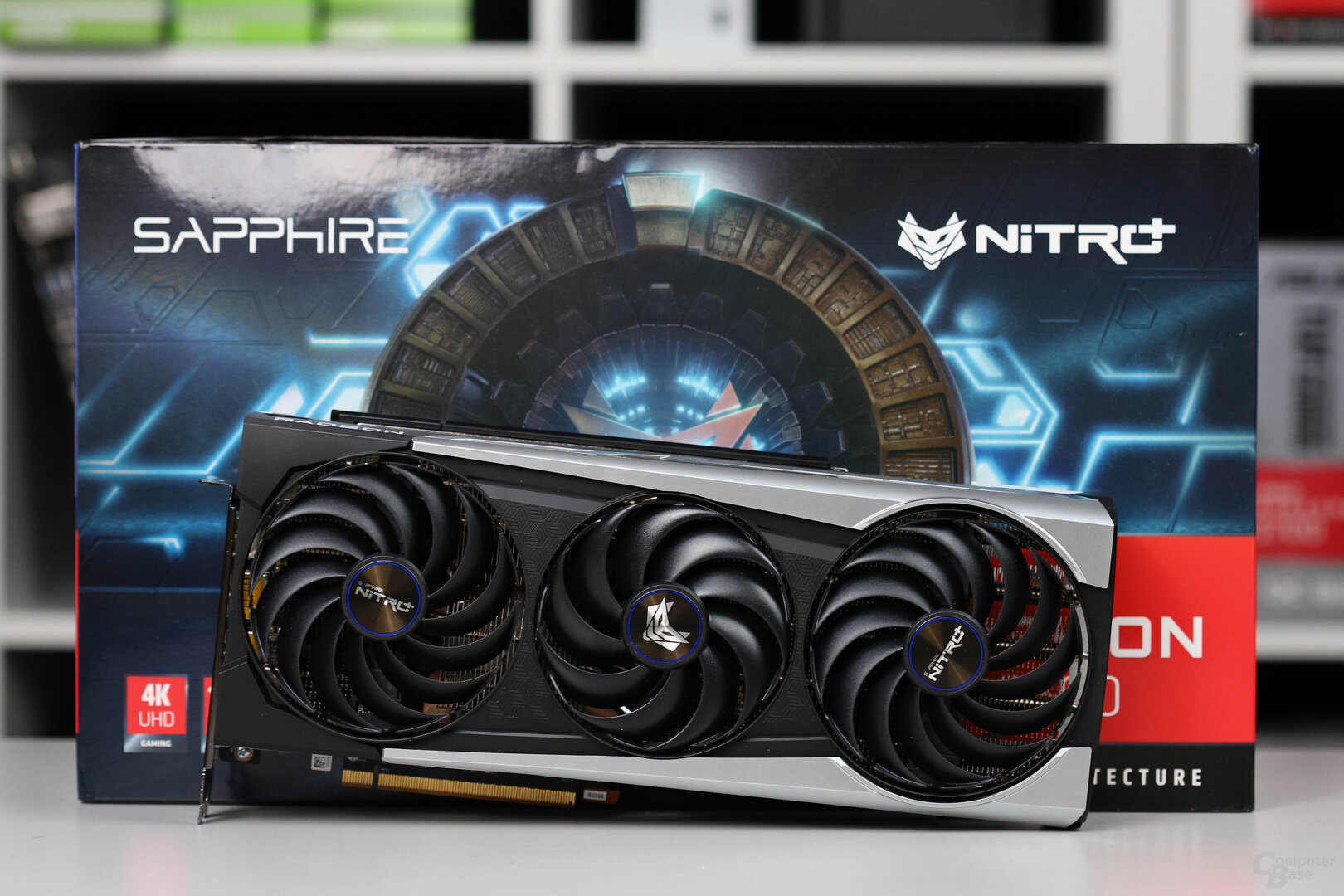
This is not only due to the fact that Sapphire uses plastic and not metal for the cover of the cooler – that sounds cheap to sometimes cheap. The other reason is a relatively small aluminum radiator, which does not affect the cooling performance. Both Nitro + are the same length at 31.0 cm, the same thickness at 13.5 cm and the same width with 2.7 slots.
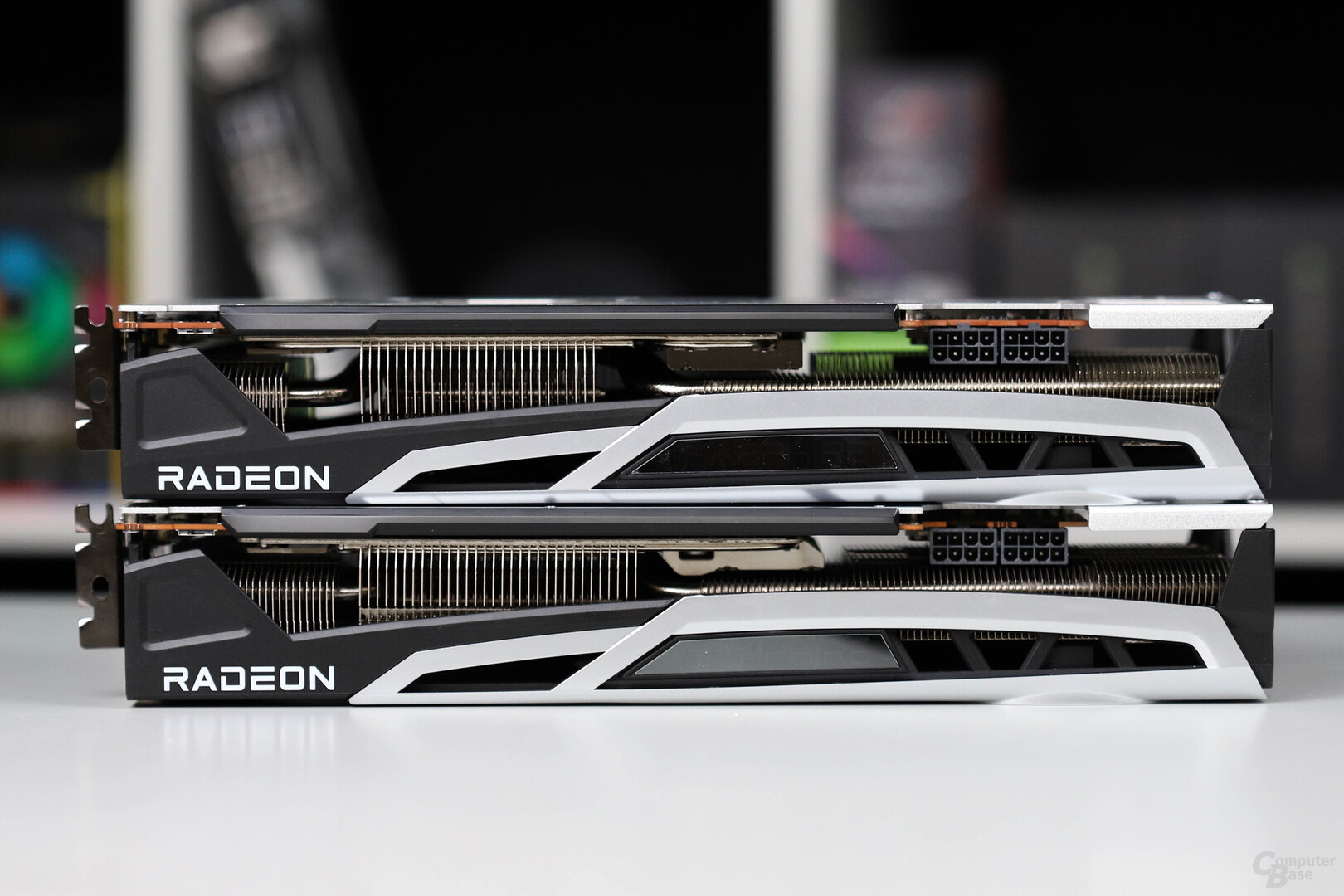
Sapphire also uses two different BIOS versions for the Radeon RX 6800 Nitro +. In the factory state, the game clock is 1,980 MHz and the turbo is 2,190 MHz, the TGP may not exceed 220 watts (+15 watts). The alternative BIOS, however, leaves it at the reference specifications. The 16 GB GDDR6 memory always works at 8,000 MHz. Two 8-pin power plugs are required for operation.
The Radeon RX 6800 Nitro + also has not only two but three BIOS versions and the BIOS switch has three different positions. When installed, the standard BIOS is in the left position and the alternative BIOS is in the middle setting. In the right position, the standard BIOS is active again, but its configuration can be adjusted via Sapphire TriXX.
With the Radeon RX 6800 Nitro +, Sapphire offers a very simple but chic RGB lighting that includes the logo and the Nitro lettering on the backplate in addition to a light strip on the edge. There is no limited edition with RGB-LED fans like the “XT Nitro +”. Monitors can be operated on three DisplayPort 1.4 DSC interfaces or one HDMI 2.1 DSC connection; Sapphire does without USB Type C.
PowerColor Radeon RX 6800 Red Dragon im Detail
While PowerColor is breaking new ground with the Radeon RX 6800 XT Red Devil with a daring design, the Red Dragon is more dignified and with only subtle RGB-LED lighting. With a length of 31.5 to 32.0 cm, a width of 2.5 to 3.0 slots and 1.45 to 1.60 kg, the Red Dragon is also less bulky, although the graphics card is still one of the larger.
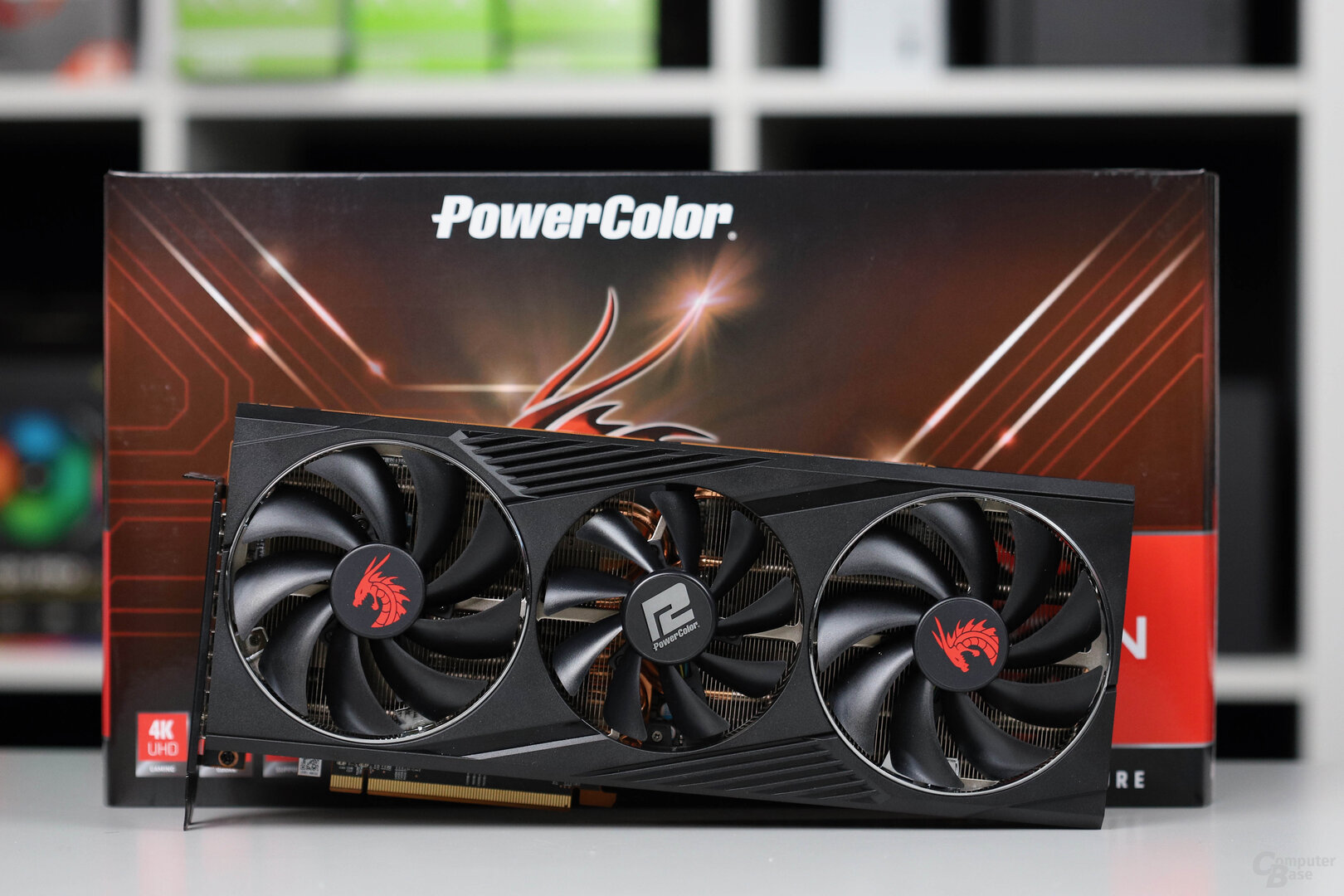
Die PowerColor Radeon RX 6800 Red Dragon
image 1 from 2

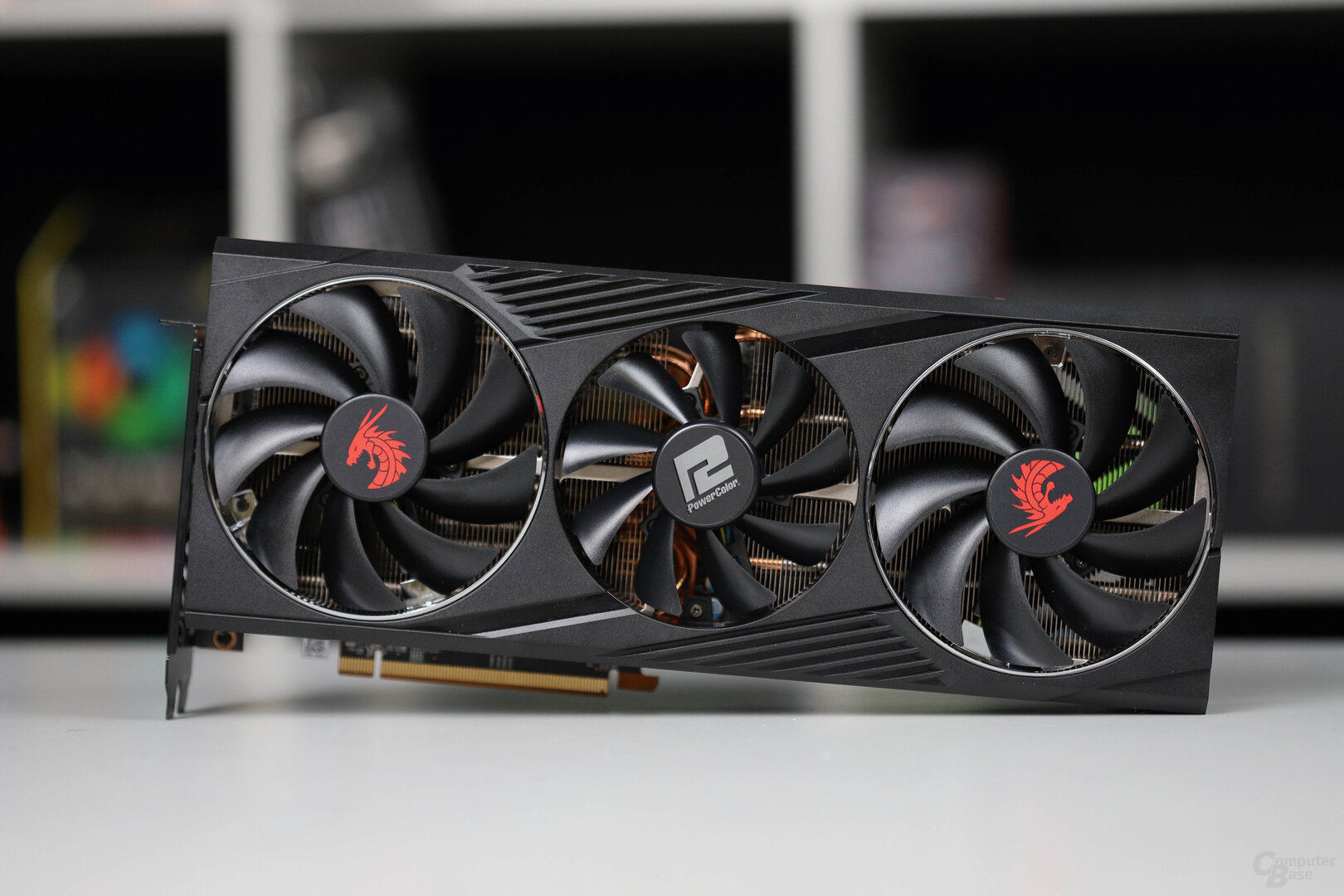
The Red Dragon also offers two different BIOS versions. The OC-BIOS is active ex works, which provides a TGP of around 225 watts (+20 watts). Alternatively, there is a Quiet BIOS that is around 210 watts, 5 watts higher than the reference design. With the OC-BIOS, PowerColor promises a few MHz less than Sapphire with the Nitro +, with the Quiet-BIOS it is a few watts more.
The graphics card can control monitors via three DisplayPort 1.4 DSC interfaces or an HDMI 2.1 DSC connection.
A comparison of design and key technical data
The Radeon RX 6800 Red Dragon and Sapphire Radeon RX 6800 Nitro + each require a lot of space in the case with a length of more than 30 cm and a width of 2.5 and 2.7 slots respectively, but only differ from one another in detail, as the following comparison shows again.
Both graphics cards have a metal backplate, which is not closed at the rear end of both versions in order to allow exhaust air from the third fan to escape more easily – the PCB is shorter than the cooling system in each case.
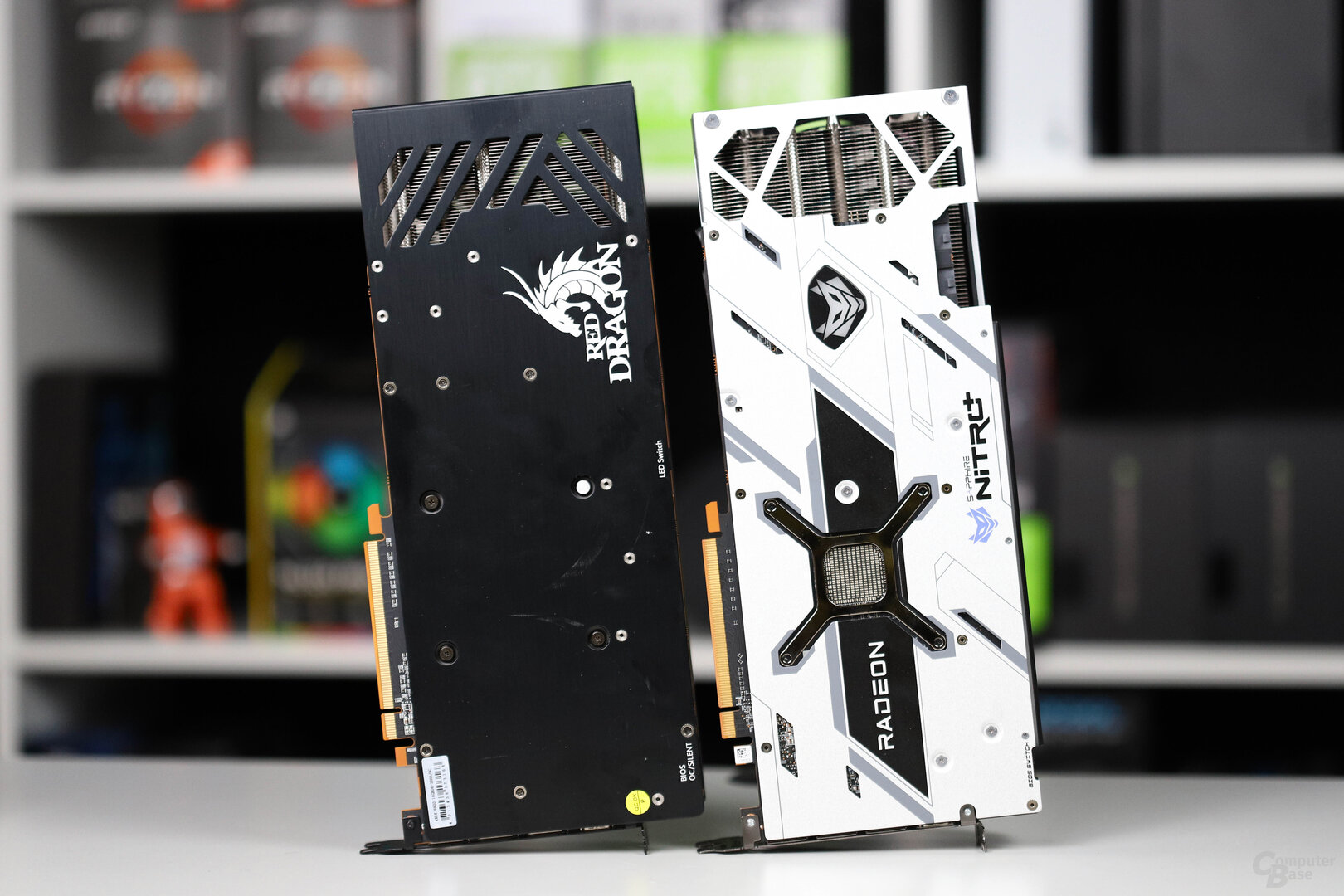
Both offer a backplate that is not closed at the end
image 1 from 2

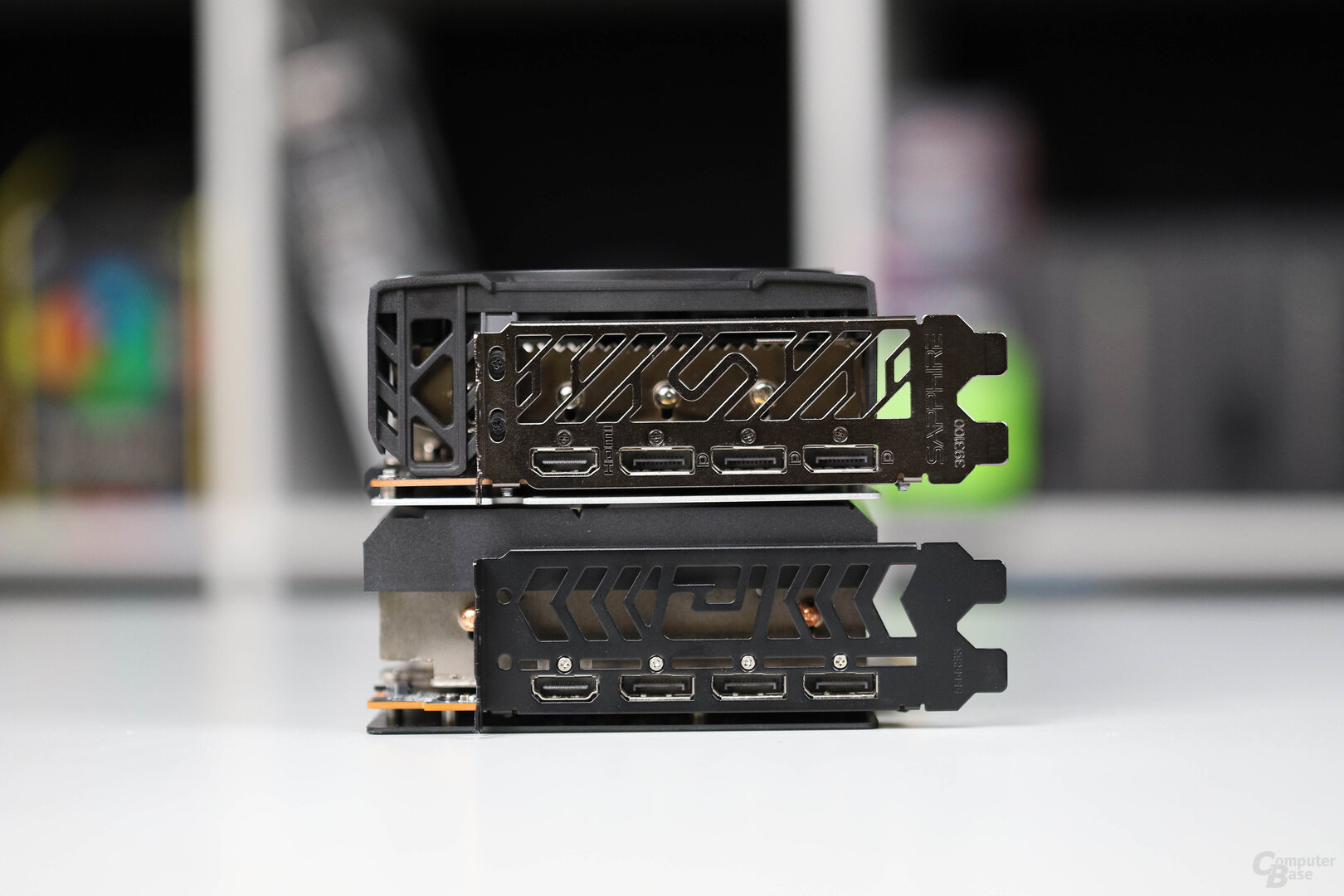
The following table contains the essential key data of the two graphics cards in comparison and contrasts them with those of the reference design.
Clock rates under load
ComputerBase has logged the power consumption of the GPU (TGP) reported by the graphics card over a period of 30 minutes in Doom Eternal (UHD). The staggering already mentioned is shown: Red Dragon OC is ahead of Nitro + with standard BIOS is ahead of Red Dragon with silent BIOS is ahead of Nitro + with alternative BIOS. In addition, it becomes clear that the Red Dragon with the factory BIOS (OC) allows the power consumption to fluctuate significantly more than the same model with the alternative Quiet BIOS or Sapphire on the Nitro +.
On the next page: benchmarks, volume, other measurements and conclusion





